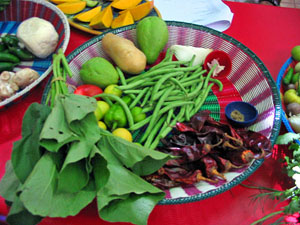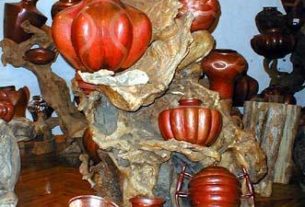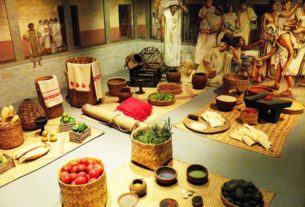At Home in Talpa de Allende, Jalisco

Many of these small mountain towns have their own web page now. Some of these pages will have a button called Virtual that will take you on a stroll through the streets, plazas and churches. You’ll see lakes, mountains, rivers and blue skies. You’ll see exactly what the tourist department of the villages want you to see, and it will be pretty.
But what that web page won’t show you is how awesome a sunrise is when viewed through a dew-laden spider web spun the night before just for your enjoyment. It won’t allow you to smell the wood fires being kindled for warming tortillas or cooking those wonderful cholesterol-packed fried pork skins we call chicharrones. The aroma of guavas cooking for rollos and pastes won’t penetrate that web page, nor will the smell of fresh ground coffee being brewed in a red clay jug, called café de la olla. You won’t see or hear the birds swooping into last fall’s now dried corn fields. You won’t be startled by the covey of quail that flutters up as you walk by their resting place. You won’t feel the fog, thick as a fine mist; separate you from the rest of the world on an early winter morning. My walking buddies bathe their faces in the dew collected on the grass blades, and they certainly don’t need the services of our famous Doctor Face Fixers.
I don’t know much about longevity genes, but we’ve all been told what we eat and breathe goes a long way toward enhancing our health. Old time doctors never used to stress the need to exercise, and they certainly never mentioned stress either.
Country folks usually eat what they grow on their ranches, so the fruits of the soil on which they live provide the nutrients, chemicals and acids required by their bodies. It goes without saying; a healthy soil produces a healthy fruit or vegetable that, in turn, produces good health in the human body. Somewhere I have read that people live longer and healthier lives if they live off their native soil. That doesn’t mean if you are one of the approximately 11 million non-Mexicans living in Mexico, you won’t live a long healthy life.
Corn plays such a fundamental role in the Mexican diet, as well as beans, chilies, tomatoes and onions. Mexicans use an approximate average of 20.4 million tons of corn per year. That’s a heaping pile of corn, folks, yet it isn’t enough. Anywhere from 4 to 500,000 tons are imported from the United States yearly.
Corn is chock-full of folate for the heart. The high fiber reduces the blood sugar level for diabetics, and decreases the risk of colon cancer. Recent studies have shown the capsicum contained in the green chile pepper inhibits prostate cancer. Besides having a high content of Vitamin C, the lycopene in tomatoes is proving to prevent a growing list of different types of cancer, including prostate and breast. They lower heart disease risks, lower the LDL and promote increase in the HDL in our cholesterol. They are also a good source of potassium, which helps regulate blood pressure. The high fiber in beans is also helpful in lowering cholesterol and stabilizing blood sugar levels. Bromelain from the pineapple is helpful to the digestive system, and helps prevent blood clotting. We get our potassium from the bananas growing in our back yard, and there is a fair amount of lutein for the eyes in a mango.
It is not uncommon for mountain folks to live past their nineties and complete more than a century on this earth. They’re not old veggies either. Most don’t use eye glasses or hearing aids; some may use walking canes, but they walk with their shoulders thrown back and their heads held high. They particularly enjoy relating to you how it was “in the old days.” There were no automobiles, no electricity, no indoor plumbing, no radios, no television and no big airplanes flying over the village every day. However, they had their food and drink from the soil where they lived.
They also had pajaretes, which I’m convinced is their secret to longevity. This may be a bit difficult for some of you city dwellers, but bear with me a moment.
One of the first chores of the day in a rancher’s life is to tend to his farm animals, which includes feeding and milking his cows. He’s bundled up in a warm coat or poncho, fending off the cold fingers of a winter morning at anywhere from 4,000 to 7,000 feet. He’s squatted on a low stool, probably with his head leaning against the flank of Old Bossy or La Jefacita. He’s washed her udder with warm water, his big hands encircling one of her teats, and the rhythm begins. The fist of the milking hand gently, but firmly, bumps the udder, then the fingers strips the milk down and into a waiting bucket held underneath the cow. The cadence of an efficient milker is almost like a good, strong heartbeat. Up-thump, down-squeeze, up-thump, down-squeeze. I don’t know where the rancher got his idea, but here’s his recipe:
Shave enough sweetened chocolate into a clean drinking glass to cover the bottom, or more if you’re a chocoholic. Pour about one ounce of alcohol into the glass, and fill to the brim with hot foaming milk straight from the natural spigot. This is what is called an Adult Milkshake. A frosty morning pajareta. Cheers! Salud! We’re off to a healthy start.


